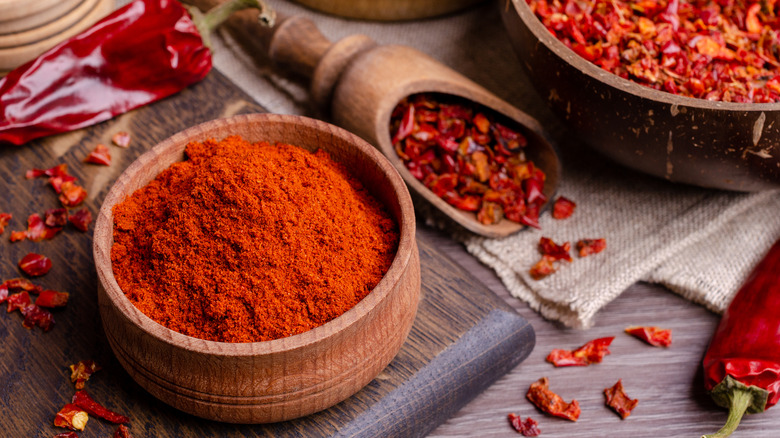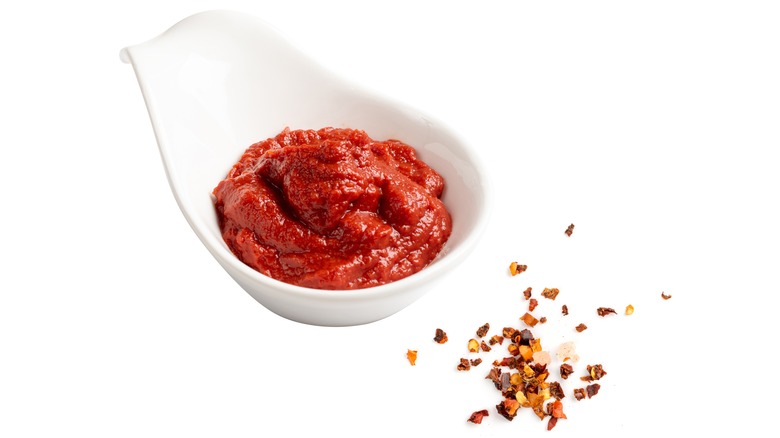The Optimal Ratio When Substituting Chile Paste For Powder
Since ground spices generally lose their potency at around six months, there may come a time when you need to swap out your chili powder with chile paste. If your powder has lost its freshness, there are a plethora of ways you can replace it — we've even rounded up some of our favorite alternatives. But let's face it, the fresh version of an ingredient almost always tastes better anyway. Yet there are way more recipes that call for chili powder than paste, so to get this substitution right, you'll need to understand the proper ratio between the two.
Recipes like classic Cincinnati chili, crispy chicken flautas, and beefy cheesy Mexican casserole all call for up to a couple of tablespoons of chili powder, so it's easy to think that you can use the same amount of paste to garner the same result. But make no mistake, these two spicy ingredients are not the same. Chile paste is a puree made by grinding up chili peppers. On the other hand, chili powder is a blend of crushed, dried chiles and a variety of different spices, while chile powder just contains pulverized chiles. Whichever one you're looking to substitute, you're going to want to keep this conversion metric in mind.
Use four times as much paste as powder
Chile paste can mean a multitude of different things, depending on which chile peppers you're using. Harissa, gochujang, ancho chili paste, and sriracha may be some of the more popular chile pastes in the U.S., but you can make also this condiment using chipotles, árbols, cascabels, and plenty more. And whether you buy your chile paste at the store or make it at home, you'll typically want to use four times as much paste as the amount of powder dictated in a recipe.
While chili powder is made of simply dried chiles and other spices, and chile powder is nothing but crushed chiles, chile paste typically dilutes the chiles during the cooking process. Some recipes use water, while others call for more flavorful options like chicken stock or olive oil, and some even add ingredients like nuts, onion, and garlic. Therefore, the chiles' spiciness and flavor are slightly diluted in the paste compared to the powder. The potency of your paste depends on what chiles you're using, of course, as well as the other ingredients involved — but in general, this ratio is a safe one to follow for a fresh, flavorful substitute.

